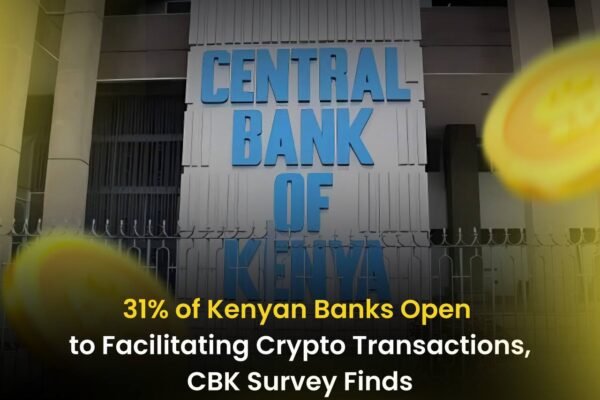

Kenya’s Monthly Remittances Surpass $437 Million in October 2024, Setting a New Record
Kenya’s remittance inflows reached an all-time high of $437 million in October 2024, marking a historic milestone for the country’s financial landscape. This record-breaking figure reflects a 17.7% year-on-year (YoY) growth, with total remittances for the first 10 months of 2024 amounting to an impressive $4.08 billion.
The steady increase in remittance inflows underscores Kenya’s growing reliance on diaspora contributions as a key economic pillar, providing vital support for households and investments.
Breaking Down the Numbers
October 2024 Performance
The $437 million recorded in October represents a significant leap compared to the same period in 2023, when monthly remittances hovered around $370 million. This growth can be attributed to:
- Increased participation of the Kenyan diaspora in global labor markets.
- Expanding digital channels that make sending money home more convenient and cost-effective.
- Enhanced economic conditions in key host countries like the US, UK, and Gulf states.
Year-to-Date (YTD) Insights
Kenya has received $4.08 billion in remittances in the first ten months of 2024, up 17.7% from $3.47 billion during the same period last year. This highlights a sustained upward trajectory in remittance inflows, driven by improving remittance infrastructure and growing financial literacy among Kenyans abroad.
What’s Driving the Growth?
1. Increased Diaspora Engagement
Kenya’s diaspora population, particularly in countries like the US, UK, and Canada, has grown significantly over the years. These regions collectively contribute a substantial portion of the total remittances.
2. Digital Transformation
The rise of fintech platforms such as M-Pesa Global, Wise, and Remitly has streamlined cross-border transactions, making it easier for the diaspora to send money quickly and affordably. Blockchain-powered solutions and stablecoins are also gaining traction, further reducing remittance costs and increasing efficiency.
3. Stronger Economic Ties
Countries hosting significant Kenyan populations have reported improved economic conditions, enabling workers to remit higher amounts. For instance, the United States, which accounts for over 60% of Kenya’s remittance inflows, has seen wage growth across various sectors where Kenyans are employed.
Economic Significance of Remittances
1. A Lifeline for Households
Remittances remain a critical source of income for millions of Kenyan households, enabling families to:
- Pay for education and healthcare.
- Invest in small businesses and agriculture.
- Secure food and basic needs amid rising inflation.
2. A Boost for National Reserves
Diaspora remittances are Kenya’s largest source of foreign exchange earnings, surpassing tea, coffee, and horticulture exports. The inflows strengthen the country’s foreign exchange reserves, helping to stabilize the shilling amidst global economic pressures.
3. Catalyst for Investments
Beyond household support, remittances are increasingly being directed toward investments in real estate, agriculture, and technology startups. This trend reflects the growing financial literacy among Kenyans abroad and their commitment to building long-term wealth back home.
Challenges in the Remittance Ecosystem
Despite the record-breaking inflows, challenges persist, including:
1. High Transaction Costs
While digital platforms have reduced remittance fees, costs remain prohibitive for many. Traditional channels like banks and wire transfers still charge exorbitant fees, eating into the amounts received by beneficiaries.
2. Informal Channels
A significant portion of remittances is sent through informal networks, making it harder for the government to track and fully leverage these funds.
3. Inflation and Currency Depreciation
While remittances provide critical support, their purchasing power is often eroded by inflation and the depreciating value of the Kenyan shilling.
Opportunities for the Future
1. Embracing Blockchain Technology
Kenya has an opportunity to integrate blockchain-based solutions to make remittances faster, cheaper, and more transparent. Stablecoins like USDT and cUSD could play a pivotal role in reducing transaction costs and ensuring the full value reaches recipients.
2. Expanding Diaspora Engagement
The government can incentivize more structured diaspora contributions through initiatives such as tax breaks for investments or diaspora bonds.
3. Financial Literacy Programs
Educating both senders and recipients about better ways to save, invest, and manage remittance funds can amplify their economic impact.
Looking Ahead
Kenya’s record-breaking remittance inflows highlight the immense potential of its diaspora to drive economic growth. With remittances expected to surpass $5 billion by the end of 2024, the focus must now shift toward maximizing their impact through innovative technology, inclusive policies, and robust financial literacy programs.
The Kenyan government and private sector players have a unique opportunity to create a more inclusive remittance ecosystem that not only supports households but also drives sustainable development.
What are your thoughts on Kenya’s rising remittance inflows? Let us know in the comments or join the conversation on TawkCrypto’s socials!







